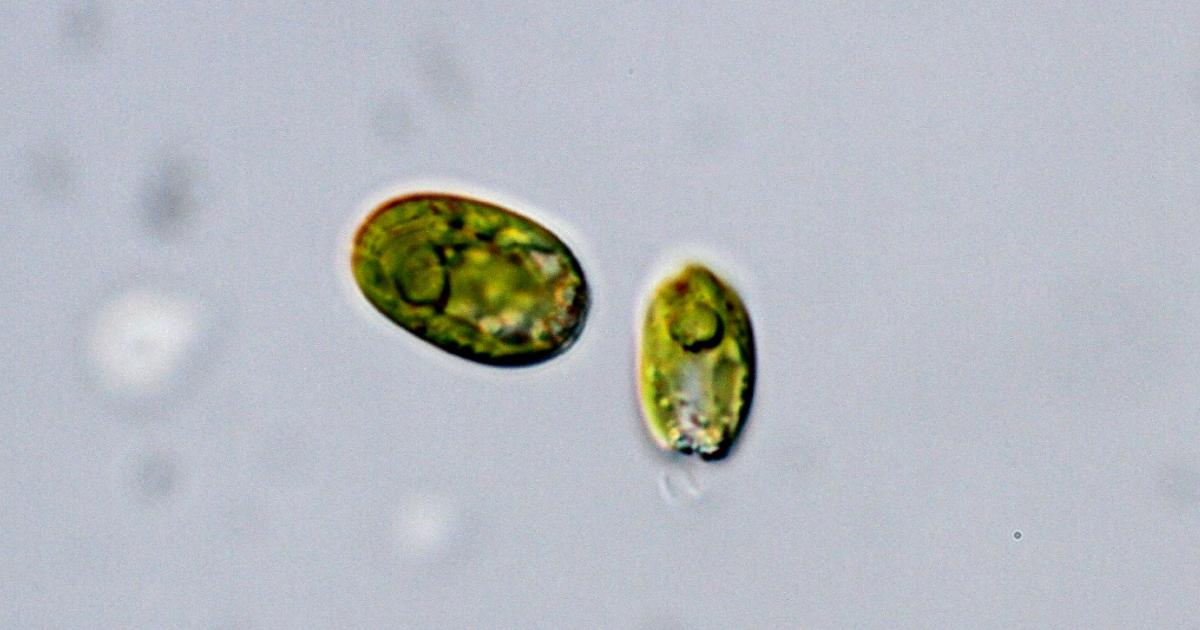Tetraselmis suecica is a unicellular green algae. The algae, unlike many microbes, can move through the sea by using whip tail-like structures, called flagella. Tetraselmis knows where to swim to by tracking light intensity. The alga is photosynthetic, meaning it generates sugars and oxygen from sunlight and CO2. For efficient photosynthesis, more sunlight is favourable. With a light receptor the alga is able to determine where the sunlight comes from and swim towards it using its whip tails.
Tetraselmis suecica is a unicellular green algae. The algae, unlike many microbes, can move through the sea by using whip tail-like structures, called flagella. Tetraselmis knows where to swim to by tracking light intensity. The alga is photosynthetic, meaning it generates sugars and oxygen from sunlight and CO2. For efficient photosynthesis, more sunlight is favourable. With a light receptor the alga is able to determine where the sunlight comes from and swim towards it using its whip tails.
The base of the food chain
Tetraselmis is a phytoplankton. This photosynthesizing alga is at the bottom of the food chain. First, they are eaten by zooplankton which are in turn eaten by small fish, etcetera. Therefore, without phytoplankton even the largest sea animals would cease to exist, simply because the whole food chain is based on fytoplankton. In Micropia, Tetraselmis is also used as a food source. Usually these microbes are grown as food for the Brachyonus sp., the rotifer.
A healthy planet with microbes
When you think of nature, you probably imagine a forest-like landscape with animals living in it. What’s so special about nature is that everything has an influence on each other. The disappearance of one species from a habitat can have enormous consequences, up to a complete change of the natural landscape. But microbes also have impact on all life in their ecosystem. For example, the yearly algae bloom causes whales to migrate, since they follow their food source. Moreover, excessive algal blooms may block too much sunlight, disturbing ecosystems below them. And also on the mainland, microbes are essential for ecosystems: without microbes breaking down plant material, a forest would suffocate in its own waste. Human activities often disturb small parts of ecosystems. However, this small disturbance may have large consequences. Therefore it is very important to know how far our actions resonate.
Algae in pharmacy
Will we soon be using algae in the battle against diseases? Research on the antioxidant effects of Tetraselmis is already very promising. Extracts of Tetraselmis namely contain many antioxidants that preventively protect against both ageing and cancer cell formation induced by UV-radiation. We still have a long way to go before we can buy algae extracts in the pharmacies, but these first results already show great promise.

